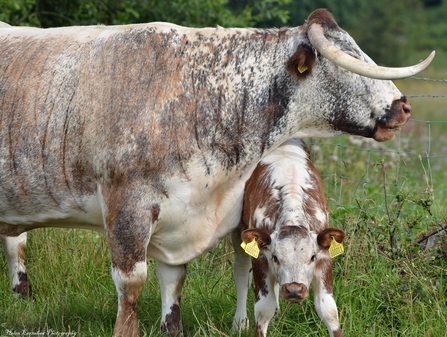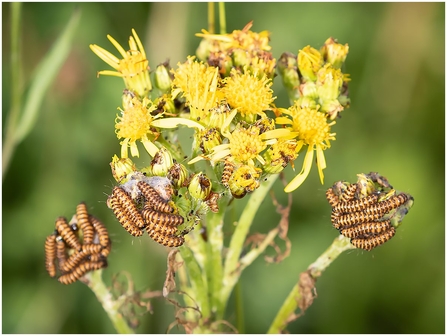Common ragwort is a native plant and is very good as a nectar and pollen source for wildlife, so we really value its presence in our nature reserve. However, it is cumulatively poisonous to horses and cattle, with toxic alkaloids causing liver damage if they ingest too much.
Whilst it is freshly growing in a field our cattle will typically eat around it because the toxins in the leaves make it unpalatable. However, if the plants become particularly abundant then the cows struggle to eat around them and there is a greater risk of them ingesting ragwort leaves and being poisoned. To keep our animals safe we therefore remove ragwort plants if they get too numerous in the cattle fields.



